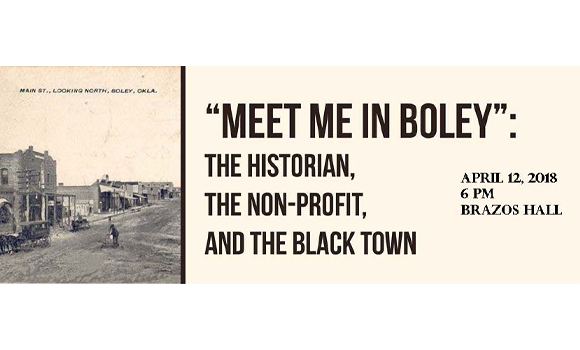Meet Me In Boley: The Historian, The Non-Profit, and the All Black Town
Thursday, April 12, 2018 | 6 pm | Brazos Hall
Dr. Melissa Stuckey has been researching and writing about Boley’s history and its role in the larger African American freedom struggle. Her work accompanied a resurgence of public interest in the history of Oklahoma’s black towns and an emergence of a black towns tour economy. Finding common ground in a shared desire to tell the histories of these towns, in 2015 Stuckey partnered with the Coltrane Group, a nonprofit organization dedicated to economic development, historic preservation, and cultural tourism in Boley and the other surviving black towns in Oklahoma, to develop projects that would aid in achieving these goals. She will discuss the challenges and rewards of this unique partnership.
Boley is one of Oklahoma’s thirteen surviving all-black towns. Founded in 1903, in what was then Creek Nation, Indian Territory, Boley is one of the more than two-dozen black towns established in Oklahoma (which became a state in 1907) between 1891 and the 1920s. Established to be a place outside the reach of Jim Crow, the Black Southerners who built the black towns overcame tremendous obstacles to establish their towns as a haven from racism and discrimination. Later, black people from all over the state used Boley as safe space from which to launch campaigns against segregation and disfranchisement. Boley’s citizenry further advanced civil rights activism in the state by bringing the plight of Oklahoma’s black population to the attention of the National Association for the Advancement of Colored People (NAACP). Paradoxically, the eventual success of the modern Civil Rights Movement, coupled by economic stagnation, led to the decline of Boley and the collapse of other black towns in the state.


